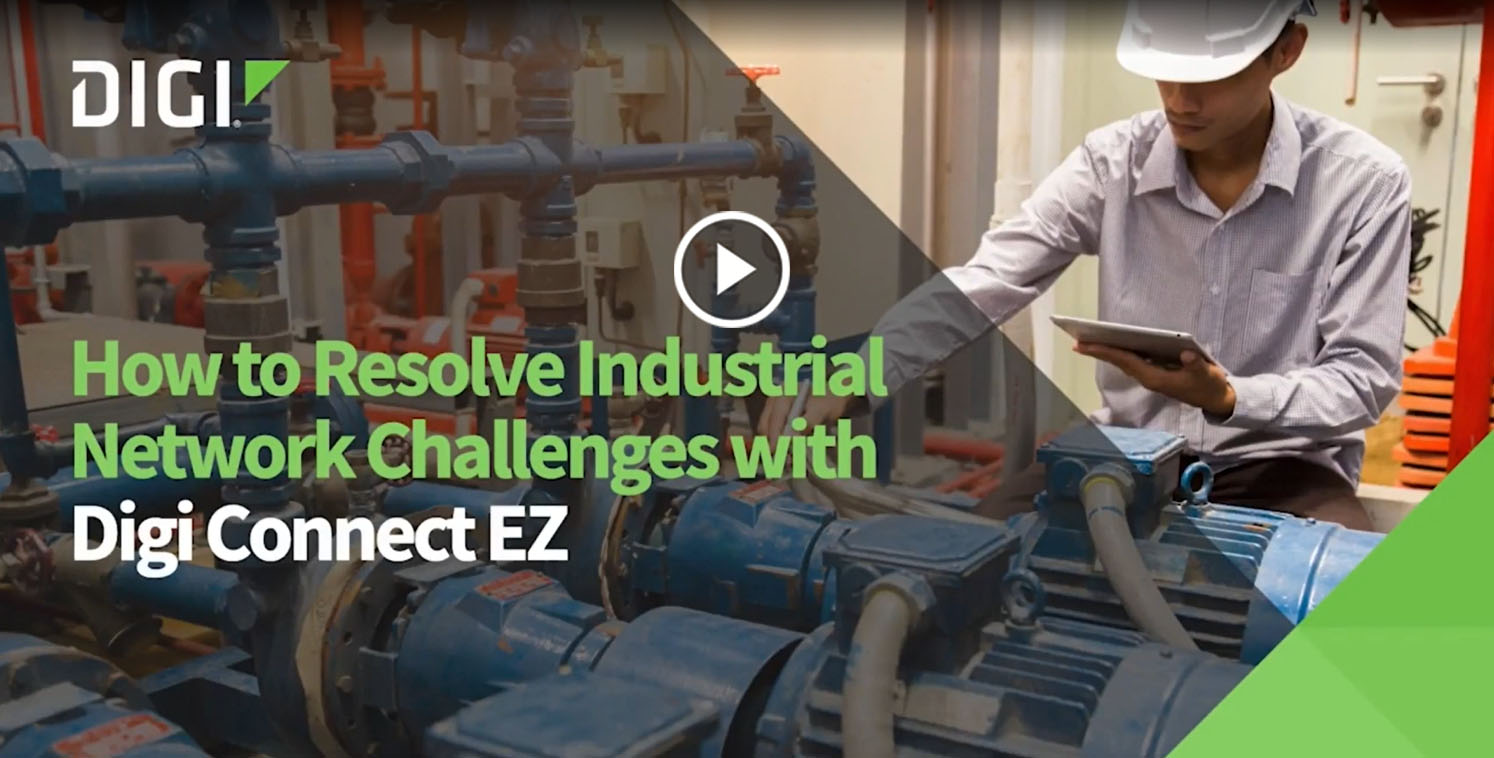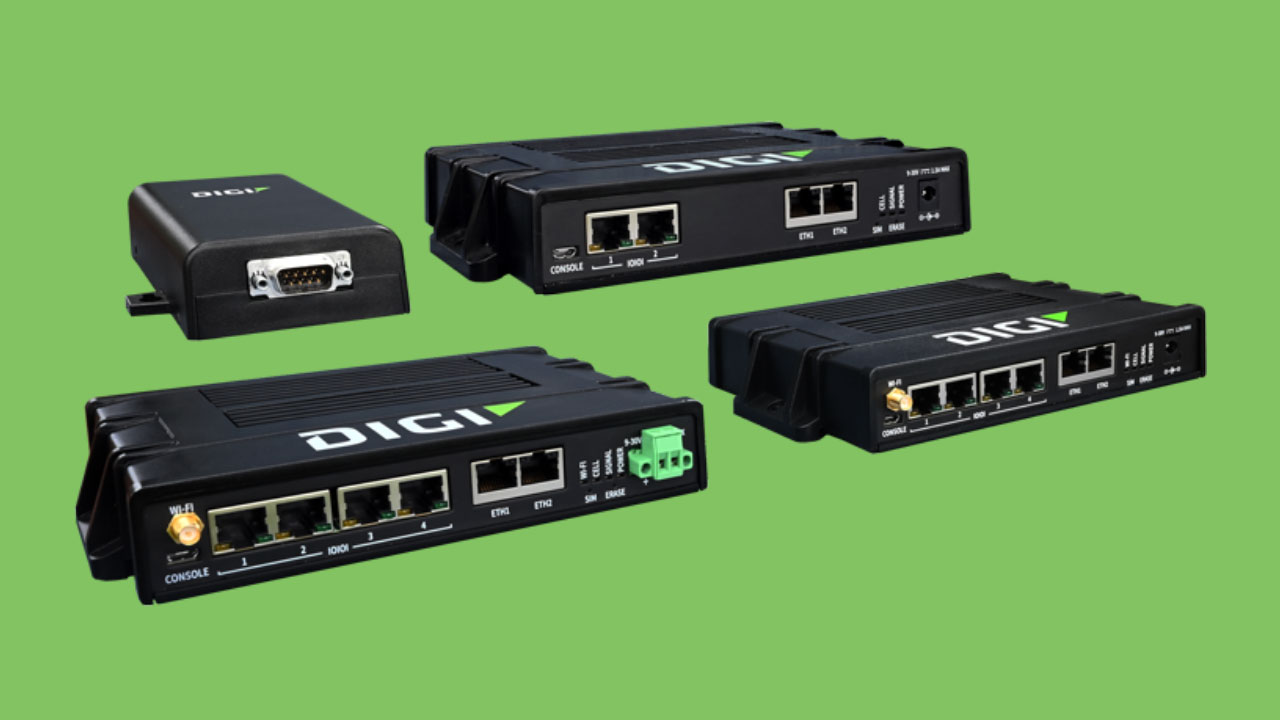In today’s industrial landscape, distributed connectivity is an essential tool for organizations that want to continue to scale their networks while maintaining existing legacy equipment. Establishing effective remote infrastructure management strategies for industrial networks has become imperative for organizations with distributed networks, especially with a range of device types across the deployment.
Already, industrial leaders like Siemens, Schneider Electric and Bosch have invested heavily in deploying connected processes and systems across their supply chains and partner networks. Innovative
industrial Internet of Things (IoT) solutions promise to maximize productivity, optimize operations and ensure environmental safety.
To take advantage of these benefits, companies need to develop robust yet manageable networks that provide real-time access to operational data. By building reliable networks at remote sites, industrial facilities like manufacturing plants and distribution centers can use connected IoT devices to monitor their equipment, optimize performance and cut costs.
Establishing and managing network access for remote and mobile sites — and the applications deployed at these locations — can be costly, time-consuming and difficult to coordinate. Let’s discuss how industrial organizations can overcome the associated challenges and implement scalable remote infrastructure management.
Challenges of Industrial Application Environments
To take advantage of the
benefits of IoT connectivity, industrial companies need to be able to more easily deploy and manage wireless sensors and remote monitoring solutions, and control equipment at the sites where operational data is generated. But deploying computing devices outside of the data center comes with many challenges — particularly the variable environmental conditions found at industrial sites.
For example, manufacturing facilities come with inevitable dust and dirt, as well as poor climate control. And industrial sites often contain dangerous chemicals, equipment or energy sources, making the devices placed there difficult to reach and maintain. As a result, connectivity products for Industrial IOT need to be designed for use in these types of environments.
Additionally, organizations can use virtualization to centralize their computing resources. Doing so — which reduces the amount of equipment that needs to be deployed at each site — not only eases the difficulty of maintenance long-term but also makes industrial networking more resilient and scalable.
Scaling Networking Across Remote Sites

When it comes to
IoT deployment and network architecture, remote locations present a number of challenges. These can include:
- Unpredictable environmental conditions mean equipment must be suitable for use in hazardous and extended temperature environments.
- Greater time, expense, and difficulty required to physically reach these sites for regular maintenance and troubleshooting.
- Limited connectivity options: For highly remote locations, bringing in a fiber or copper line for Multiprotocol Label Switching (MPLS) or a hardline internet connection can range from expensive to impossible. Even when fiber or copper lines can be installed, the distance to the nearest server and the resulting latency often mean that connectivity speeds and uptime are significantly constrained.
- Finally, transparent application connectivity — the applications running on virtualized computers that need to connect to this remote equipment often require the use of COM ports to communicate with critical devices that are serially connected. In order for industrial IoT use cases to succeed at scale, organizations need networking solutions that support secure, serial connectivity but don’t require them to update or replace existing hardware or software.
Being able to connect remote devices using existing applications allows organizations to adopt IoT-driven use cases faster. And when organizations can scale networking across industrial and remote sites, they can leverage the data collected to optimize operations, ensure safe working conditions and improve equipment maintenance and quality control.
Benefits of Scalable Remote Infrastructure Management for Industrial Use Cases
Deploying and connecting IoT equipment at remote, industrial sites requires careful planning and preparation that may seem expensive, time-consuming and difficult to justify at the outset. However, the resulting insight into each industrial site — the status and health of remote assets, its operational outcomes and its environmental conditions — can provide continual value that’s well worth the effort.

Having connected devices on-site allows industrial organizations to implement critical capabilities like
environmental monitoring or intelligent
supply chain management. But when deploying and managing IoT devices alongside legacy infrastructure, industrial investments need to find a sustainable balance that supports both continual differentiation and scalable growth.
Without internal expertise on IoT device management, connected device design and network architecture, companies can find it difficult to efficiently and cost-effectively implement secure networking designed for use at industrial sites.
In a recent
report on scaling industrial IoT, McKinsey & Company described how relying on expert partners can allow organizations to effectively implement an IoT platform at scale and better navigate the inherent cybersecurity challenges. Additionally,
Forrester Research notes that working with ecosystem partners allows “get out of the platform-building business and play to their strengths…[and] focus attention, effort, and marketing on the capabilities with which they really can — and do — differentiate.”
With over 35 years of experience in designing and implementing mission-critical connectivity, Digi® has the expertise and scalable remote
infrastructure management solutions to help organizations successfully navigate industrial network challenges.
The Digi Approach to Remote Infrastructure Management
Our infrastructure management products are focused on delivering critical asset connectivity for the widest range of serial and USB managed equipment whether accessed over wireline, wireless and cellular networks or directly connected. Now, we’ve introduced the
Digi Connect® EZ product family, allowing your organization to place computers in a more secure location away from the heavy machinery or vulnerable locations on site.
This remote infrastructure management approach allows you to connect a wide range of equipment to Digi Connect EZ, put those devices on a local network and relocate computers to an office or data center. Connect EZ works with Digi Navigator, which allows you to configure any version of the device server — whether it's Connect EZ Mini, the Connect EZ 2, Connect EZ 4 or Connect EZ 4i — in under 10 minutes — as well as monitor and access it over its lifetime.
Digi Connect EZ supports
Digi RealPort® serial-over-network driver , which provides a secure, robust, flexible and scalable way to access remote serial equipment over IP networks, whether LAN or WAN, without having to update or replace your current equipment or software. RealPort delivers seamless connectivity for many existing applications but Connect EZ also supports a variety of other communications protocols that you may need to use. For example, Connect EZ also supports virtual private network (VPN), and Transmission Control Protocol (TCP) or Transport Layer Security (TLS) socket connectivity, as well as Modbus TCP RTU gateway support.
Connect EZ is also well suited for remote facilities, offering connectivity with our
Digi CORE® LTE plug-in modem. Together, they provide an integrated solution for connectivity to remote, critical equipment that is simple to configure and maintain regardless of the protocol or software you need to communicate with the connected device.
Overcome Industrial Network Challenges with Digi Connect EZ

Digi Connect EZ is our next-generation family of serial device servers that provide connectivity for critical assets in business, commercial and industrial automation applications with the added benefits of cellular connectivity, Wi-Fi and dual Gigabit Ethernet. Quick to configure and easy to deploy, Digi Connect EZ offers enhanced security, access control and management capabilities, providing seamless integration into existing applications while increasing flexibility to meet today's and tomorrow's challenges.
With Connect EZ, we bring our highly secure and capable DAL architecture and
Digi Remote Manager® platform to our automation serial device and terminal servers adding full support for VPN, firewall and routing along with edge intelligence and central management capabilities and a wider range of connectivity via our LTE core plugin modules and Wi-Fi options.
The Connect EZ family of products enables customers to implement robust and flexible device connectivity solutions that can be managed at scale throughout the deployment life cycle:
- The Connect EZ Mini is the smallest member of the family with a single Multiple Electrical Interface (MEI) serial port. It can be used to connect one isolated device or several can be used to connect multiple devices spread out across a facility, providing the flexibility to place the point of connectivity close to the equipment and reducing the need for long serial cable runs.
- Digi Connect EZ 2 and Connect EZ 4 offer two and four-port MEI serial connectivity along with dual gigabit ethernet and the option to use Digi's core plugin LTE modems. The Connect EZ 4 also offers Wi-Fi connectivity that supports either Wi-Fi client or access point.
- The Connect EZ 2 and Connect EZ 4 offer the flexibility to connect to existing networks in star or bus topologies and to offer cellular and Wi-Fi connectivity where needed.
- Additionally, Digi offers Connect EZ 4i, which has been specifically designed for use in hazardous industrial sites and is certified to withstand temperatures in Class 1, Division 2 environments.
Because of the flexibility offered by the Connect EZ family, customers can implement robust, secure, scalable connectivity solutions to connect many devices across a facility or at remote locations, all with a common simple to configure the platform. With support for 9- to 30-volt DC power, extended temperature, LTE plug-in core modules and a wide range of serial connectivity capabilities, Connect EZ is the most flexible and efficient way to solve many of today's challenging use cases for industrial connectivity.